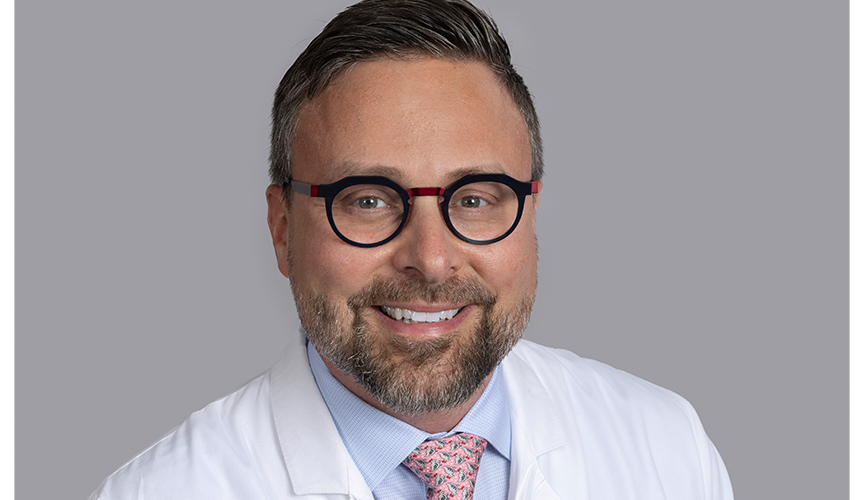Inguinal Hernia Management
Ideal timing and technique of surgical specialties for inguinal hernias in children are highlighted in a recent statement in Pediatrics by Le Bonheur Pediatric Surgeon Tim Jancelewicz, MD, MA, MS. In his role as American Academy of Pediatrics (AAP) Section on Surgery liaison to the AAP Committee on Fetus and Newborn, Jancelewicz reviewed existing literature and data to identify best practices, including optimal timing of repair in preterm infants, which doctors should perform inguinal hernia repair and the best surgical approach.

Tim Jancelewicz, MD, MA, MS
“We continue to see controversies in how inguinal hernias should be managed in children,” said Jancelewicz. “This report reviewed how inguinal hernias form and evaluated how pediatric hernias are treated, with special attention to the risks of general anesthetic in very young children. Our results show the ideal timing, surgeons and surgical methods for hernia repair.”
Inguinal hernias occur when the contents of the abdomen protrude through a hole in the processus vaginalis known as a patent processus vaginalis (PPV). Inguinal hernias occur in approximately eight to 50 full-term infants per 1,000 births, a rate which increases to 20% or more in extremely low birth weight infants. But the timing of repair in preterm infants continues to be debated because of comorbidities associated with prematurity and anesthesia-related concerns. Jancelewicz and his co-authors reviewed multiple studies to show that it is beneficial to defer inguinal hernia repair in preterm infants until after NICU discharge. This may reduce the risk of respiratory complications without increasing the risk of hernia incarceration or reoperation, said Jancelewicz.
When determining who should perform inguinal hernia repairs, all evidence points to pediatric surgical specialists or general surgeons with a high case volume of pediatric inguinal hernia repairs for the best outcomes. The overall risk of hernia recurrence was more than double among patients managed by adult general surgeons, but high-volume general surgeons had recurrence rates similar to pediatric surgical specialists, the research reported.
“To achieve optimal outcomes, ideally, pediatric surgical specialists, pediatric urologists or general surgeons with a significant yearly case volume should repair pediatric inguinal hernias,” said Jancelewicz. “In addition, care under a pediatric specialist anesthesiologist led to a lower incidence of complications in infants.”
Between 2009 and 2018, the laparoscopic approach to pediatric inguinal hernia repair has increased fivefold compared to traditional open surgery. Studies have shown no difference in complications or recurrence rates in the two approaches, but the laparoscopic approach had significantly shorter operation times and fewer post-operative complications.
Additional best practices Jancelewicz and his AAP co-authors determined include:
- Laparoscopy is a feasible alternative to managing recurring hernias.
- Evidence does not suggest that exposure to a single, short duration of anesthesia needed for inguinal hernia repair has adverse effects on neurodevelopmental outcomes.
- If an additional PPV is found without an existing hernia, no strong data exist for or against its repair. A nuanced conversation should be held with the family regarding the risks and benefits of each option.
“Inguinal hernias are a common condition and one of the most commonly performed procedures in children, but their management continues to be debated,” said Jancelewicz. “Our hope is that this publication establishes evidence-based guidelines for pediatric surgeons to follow in their care of children with inguinal hernias.”
Help us provide the best care for kids.
Le Bonheur Children's Hospital depends on the generosity of friends like you to help us serve 250,000 children each year, regardless of their family’s ability to pay. Every gift helps us improve the lives of children.
Donate Now


















